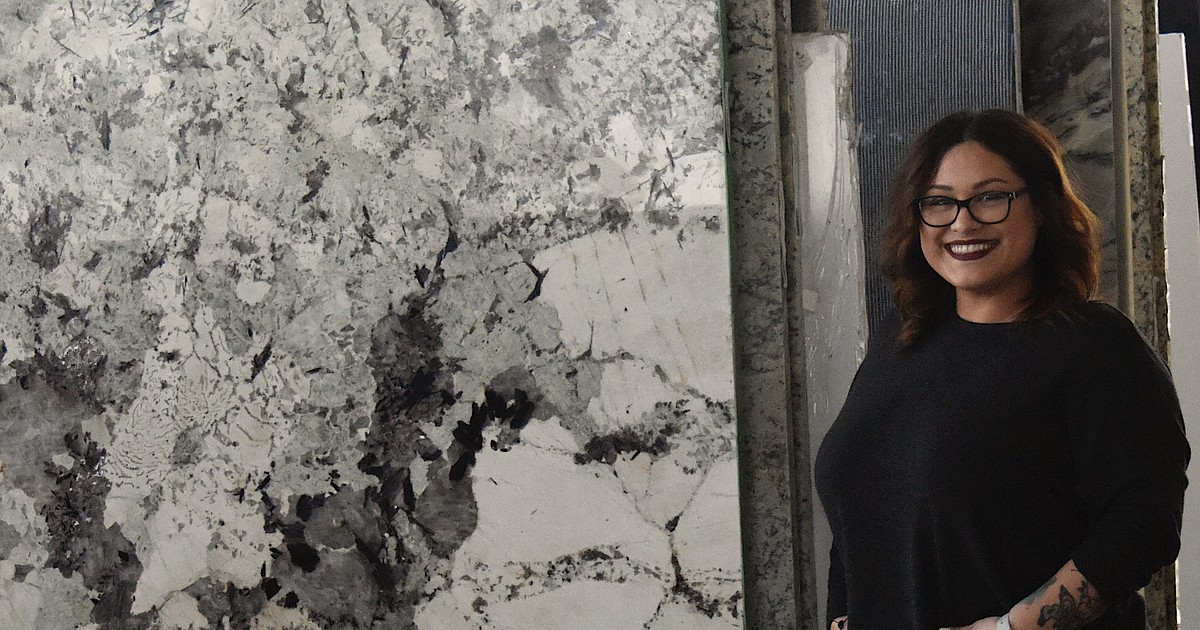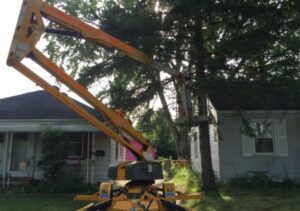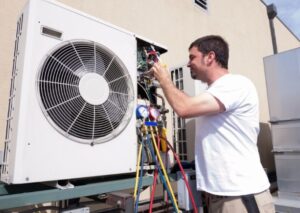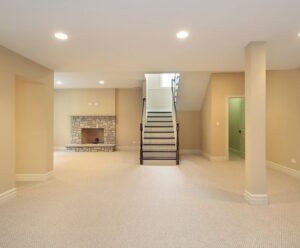The best robot mops of 2023

We may earn revenue from the products available on this page and participate in affiliate programs. Learn more ›
Updated Mar 27, 2023 2:17 PM
Say goodbye to soggy mops with the help of the latest smart home appliance: a robot mop that—you guessed it—sops up spills and scrubs schmutz off of your flooring. If a mopping robot sounds right up your alley, you might be excited to know that you can get a combined robot vacuum and mop (although, for reasons that will become clear, you might not want to). This guide will give you the insider info you need to help you find one of the best robot mops for your home.
How we picked the best robot mops
There’s something about the task of mopping that just seems really onerous. Maybe it’s because there are no shortcuts, and all your hard work can be undone instantly by one muddy footprint or the tiniest amount of food spillage. So, little wonder that the concept of the best robotic vacuum with mop is an attractive one. However, before you get carried away, it’s worth noting that these robots are still in their relative infancy and come with certain limitations. Even the best mopping robot isn’t going to do what a person-powered mop can. We still think robot mops are worth a go if you have kids or pets and need a device to do constant little cleanups to keep the chaos at bay.
Think about how you’d clean a floor the old-fashioned way. In that case, you’d probably vacuum it first, then use a combination of water and detergent over the surface, and once you’ve done that, you’d get a clean bucket of water and rinse away the dirty water and soap.
That’s not how mopping robots work. Most are more akin to a Swiffer-style sweeper mop in that either they spray the floor with water (a lot specifically advise against using any form of detergent, although some do have proprietary formulations) to loosen any grime. They then drag a cloth over the floor to remove schmutz, or, in the case of “dry mop” robots, use damp cloths or pads to go over a surface. That said, there are also scrubby spin mops and the best robot vac and mop combos to consider. We vetted dozens of the best robotic mops of all types before arriving at our recommendations.
The best robot mops: Reviews & Recommendations
You already know about robot vacuum cleaners—you might even have one running around in your carpeted living room right now. Maximize the cleaning of all surfaces in your home by upgrading to a robot mop. Here’s a rundown of our favorites for a variety of needs.
Best overall: eufy by Anker, RoboVac G30 Hybrid Robot Vacuum

Specs
- Dimensions: 12.8 inches L x 12.8 inches W x 2.85 inches H
- Power: Corded electric and lithium-ion battery
- Battery life: 110 minutes
Pros
- Mop and vacuum in one
- Works on range of surfaces
- Good for pet owners
Cons
- Less suction power than other models
Vacuum with 2000Pa of suction power and an interchangeable mopping module with adjustable power settings for different surfaces. This robot vacuum and mop uses laser navigation to create accurate maps of your home and returns to the base station to recharge before returning to the place where it stopped with pinpoint accuracy.
Best vacuum combo: Ecovacs Deebot T8 AIVI Robot Vacuum Cleaner

Specs
- Dimensions: 13.7 inches L x 13.7 inches W x 3.6 inches H
- Power: Lithium-ion battery
- Battery life: 110 minutes
Pros
- Uses AI for object recognition and laser mapping to plan
- Mops and sweeps at the same time
- Large water tank allows it to mop a 2,000-square-foot space
Cons
- Expensive
- Users have encountered problems with the mapping system and its ability to distinguish between surfaces
Robot mop machines differ; while some can switch seamlessly from vacuum to mopping, others require you to swap in a mopping module and fill a tank with water before it can mop. Sophisticated mapping software allows you to designate no-go and no-mop zones with this robot vacuum and mop, while the 240ml water tank allows for more than 2,000 square feet of mopping. Object recognition technology means it won’t get tripped up by socks and cables. The built-in camera can even be a remote security device with on-demand live video.
Best smart: iRobot Braava Jet M6 (6110) Ultimate Robot Mop

Specs
- Dimensions: 10 inches x 10.6 inches x 3.5 inches
- Power: Lithium-ion battery
- Battery life: 150 minutes
Pros
- Long battery life
- Maps your home
- Responds to spills and messes in the moment
- Recharges itself when the battery gets low
Cons
- Uses disposable pads
- Water distribution power may be an issue
Featuring smart charge and resume technology that allows it to resume cleaning where it left off, this smart mop accurately maps your home and integrates with home assistants so you can literally tell it to “mop in front of the kitchen table” after a spill. Works with water or proprietary cleaning solution and with single-use or washable pads.
Best for hardwood floors: BISSELL SpinWave Hard Floor Expert Wet and Dry Robot Vacuum

Specs
- Dimensions: 14 inches L x 13 inches W x 4 inches H
- Power: Lithium-ion
- Battery life: 100 minutes
Pros
- Uses cleaning solution specially designed for wood floors
- Donates money to support homeless pets with every purchase
- Cleans with reusable pad
Cons
- May not do well in homes with atypical layouts
- Sometimes bumps into furniture
This superior robot vacuum doubles as a mop with machine-washable mopping pads that work in conjunction with a cleaning solution to scrub efficiently and clean floors. A soft surface avoidance sensor means it effectively avoids carpets and rugs when in mopping mode.
Best self-emptying: Ecovacs Deebot Ozmo N8 Pro+

Specs
- Dimensions: 13.9 inches L x 13.9 inches W x 3.69 inches H
- Power: Lithium-ion
- Battery life: 110 minutes
Pros
- Strong suction power
- Superior LIDAR mapping
- Automatically empties
Cons
- Cumbersome setup with app
- Short battery life
The Ecovacs Deebot makes using a robot mop even easier. The device comes with powerful 2600Pa suction that’s especially useful on carpets. It’s designed with 3-D technology and LIDAR that enable the device to map your home with greater precision and avoid furniture and other obstructions. And when you’re done, the Deebot empties itself.
Best budget: iRobot 240 Braava Robot Mop

Specs
- Dimensions: 7 inches L x 6.7 inches W x 3.3 inches H
- Power: Lithium-ion
- Battery life: 160 minutes
Pros
- Two hours of battery life
- Designed for hard-to-reach places
- Works in kitchens and bathrooms
- Relatively inexpensive
Cons
- Doesn’t have mapping capability
- Not as powerful as other models
Works with disposable pads to dry sweep, damp mop, or wet mop hardwood, tile, and stone. The clever design of this iRobot robot mop means it cleans easily around furniture, under cupboards, and right up to the edges of walls. A relatively small tank and compact battery mean this model best suits compact rooms.
Things to consider when picking the best robot mop
Combo v. solo device
At first glance, it makes perfect sense: one machine that can do it all. But if you’re buying a combination product, it’s worth checking a few things first. One of the complaints about the earliest vacuum and mop combo models was that, although they were meant to be able to differentiate between hard floors and carpet, you ended up with a soggy rug when they didn’t. That said, advances in technology now mean that these are far smarter devices that, with a little bit of prep, can map out the whole of your home (see below). Once mapped, you can limit certain areas as “no-go areas”—where you don’t want the machine going at all—or as “no-mop” areas where it’s fine for it to vacuum but not for it to mop.
Power
There’s a general feeling that, like a watched pot that never boils, a watched robot doesn’t do its best work when it’s being observed. This is why battery life shouldn’t really be a concern of yours. In an ideal world, you’ll just set and forget—essentially schedule for it to clean when you’re out of the house, and then just come back to tidier floors without worrying about exactly how that happened.
However, that’s only possible if your robot mop has a feature that makes sure it returns to the base station to charge itself when its juice is running low and then has the smarts to get itself back to where it left off so that it can finish the job. Otherwise, you end up with a device that runs out of power and leaves the job half done. So don’t look at battery life exclusively. It’s also tricky to know exactly what battery life is until you get the device rolling, so you’re better off looking for gadgets that offer this sort of return, recharge, reboot approach. And unfortunately, there’s no standardized name for this sort of tech—some brands call it “pinpoint return,” others “smart charging,” so you really need to read the small print.
Mapping
There are various ways in which you can “tell” a robot vacuum or robot mop where it should and shouldn’t go in your home. The most simplistic requires you to use tape, known as barrier tape, boundary tape, or just magnetic tape. You literally tape around areas that you don’t want the mop to go into, such as where your pet’s food bowls are, or around the perimeter of your Persian rug. Other solutions include virtual barriers like beacons that emit infrared, which communicates to your robot that the area is a no-go zone.
However, these relatively rudimentary and unsightly approaches have been superseded by far better technology. Using a variety of sensors, the robot mop moves around your home and creates an accurate picture of the layout of your house. The most sophisticated devices can generate and store multiple maps (ideal for houses with several floors) viewable on a smartphone app. And with the help of this app, you can not only track how your robot is doing in real-time, but also create zones that should be cleaned more frequently, as well as virtually rope off areas. So while good mapping technology does add to the cost of a robot mop, when it works well, it’s a worthwhile investment.
Spin mop or spray mop?
While some robot mops work in a “dry mop” fashion, where you attach a damp cloth or pad to it and it wipes it across the floor, “wet mops” have an on-board reservoir of water (or occasionally cleaning fluid) which they distribute across the floor—some will gradually feed water into a pad. In contrast, others have a spray function so that stains and sticky patches get blitzed away and then swiped over with a cloth.
Some other mops have a spin function which means that rather than having static pads, they have spinning pads. Spin mops are tougher on sticky splodges and dirty marks than water alone. For another option, check out our guide to the best steam mops.
Price
As is often the case with new technology, you can get a robot mop on a budget, but it’s probably not going to have the same bells and whistles as a top-of-the-range, top-of-the-budget one. So don’t expect sophisticated mapping technologies, control via an app, or intuitive features that will prevent the robot from drenching rugs or tipping downstairs.
But budget robot mops do exist. They tend to be a lot smaller, which means shorter battery life (and these definitely won’t have a return, recharge, reboot function), so these mop robots are better for focusing exclusively on self-contained kitchens or bathrooms rather than larger open-plan spaces. They’re also likely to have even more limited cleaning power, so maybe think of them as a maintenance mop rather than something that will do a thorough clean of ingrained dirt. But if you’re tight for time, live in a relatively small space, and hate mopping, they’re definitely worth considering.
FAQs
Q: Are robot mops worth it?
Whether a robot mop is worth it for you depends on how much you value your time and what your expectations are. If you’ve got a filthy, mud-caked floor with ingrained dirt that hasn’t been cleaned in years, expecting a robot mop to get it sparkling clean might be a bit much. But if you like the idea of a quick maintenance mop daily but are never going to do it yourself, a robot mop will.
Q: Can you use a robot mop on laminate floors?
Yes, you can use a robot mop on laminate floors. Obviously, double-check both the small print of your device and the small print of any cleaning fluid that you’re using before you use a robot mop on any flooring. But most are designed not to scratch hard floors and not to leave a lot of water on the floor and, as such, most hard floorings—from tile, stone, and concrete to vinyl, hardwood, and laminate—can be maintained with a robot mop.
Q: How do I choose a robot mop?
As with any purchase, choosing a robot mop comes down to your priorities. Budget has to be the first consideration, but you also want to think about whether you want a combined vacuum and mop—and if so, whether your priority is vacuuming or mopping and whether you want one that can seamlessly do both without needing you to switch in a mopping module. Hopefully, some of the information here has helped you to identify what’s out there and how a robot mop could work in your home.
A final word on shopping for the best robot mop
Choosing the best robot mop for you might well come down to choosing the best robot vacuum and mop or the best spray mop, but at least now you should have an idea of the tech that is out there and what it can do. These are still very much household appliances in their infancy. Over the next few years, we can expect to see huge advances—especially now that brands such as Dyson have started to get into the robot vacuum game. This invariably means that there will be more models coming to the market, improved efficiency, and more features and prices will come down, so watch this space.
Why trust us
Popular Science started writing about technology more than 150 years ago. There was no such thing as “gadget writing” when we published our first issue in 1872, but if there was, our mission to demystify the world of innovation for everyday readers means we would have been all over it. Here in the present, PopSci is fully committed to helping readers navigate the increasingly intimidating array of devices on the market right now.
Our writers and editors have combined decades of experience covering and reviewing consumer electronics. We each have our own obsessive specialties—from high-end audio to video games to cameras and beyond—but when we’re reviewing devices outside of our immediate wheelhouses, we do our best to seek out trustworthy voices and opinions to help guide people to the very best recommendations. We know we don’t know everything, but we’re excited to live through the analysis paralysis that internet shopping can spur so readers don’t have to.








